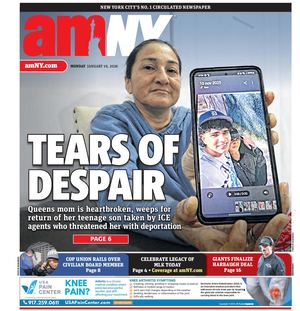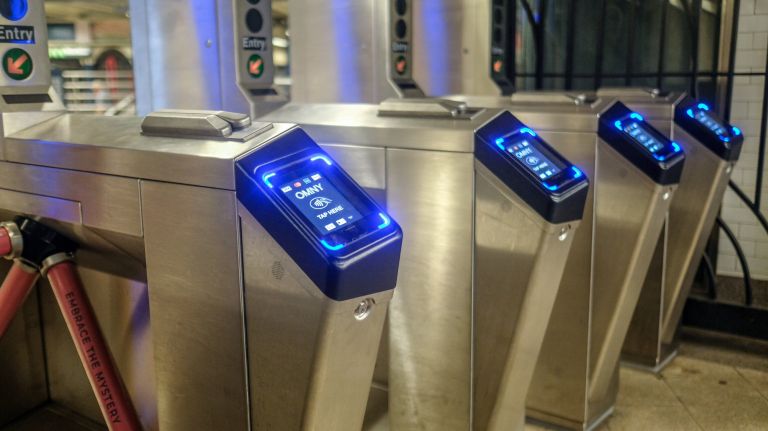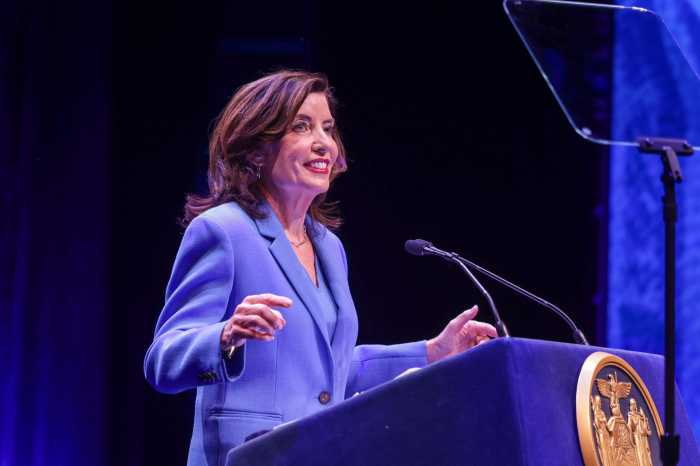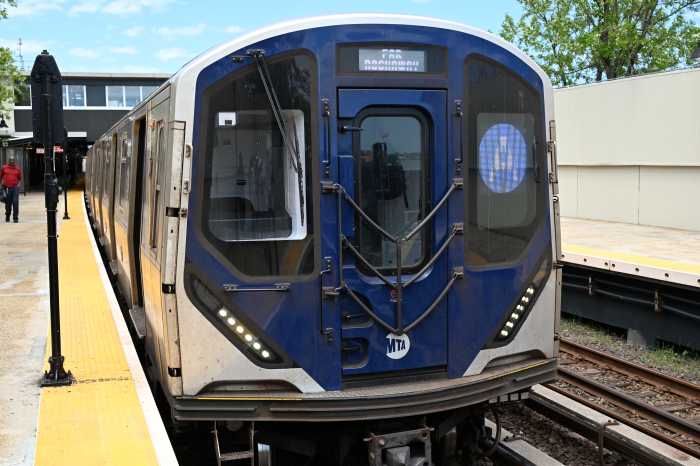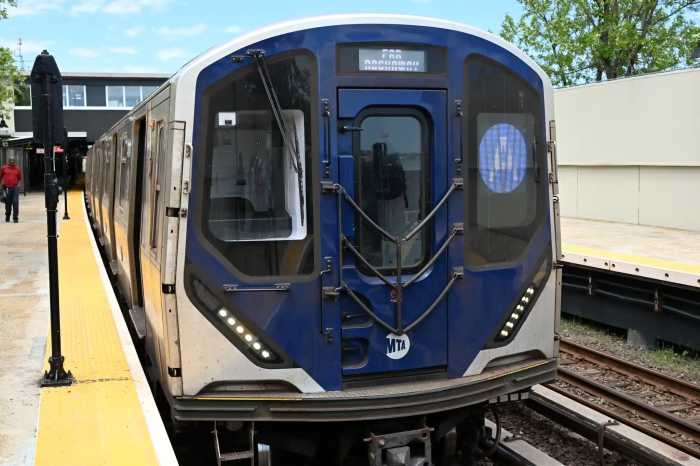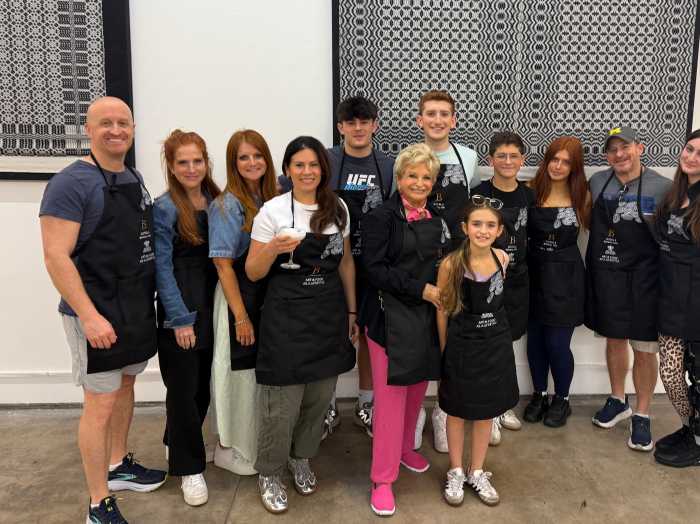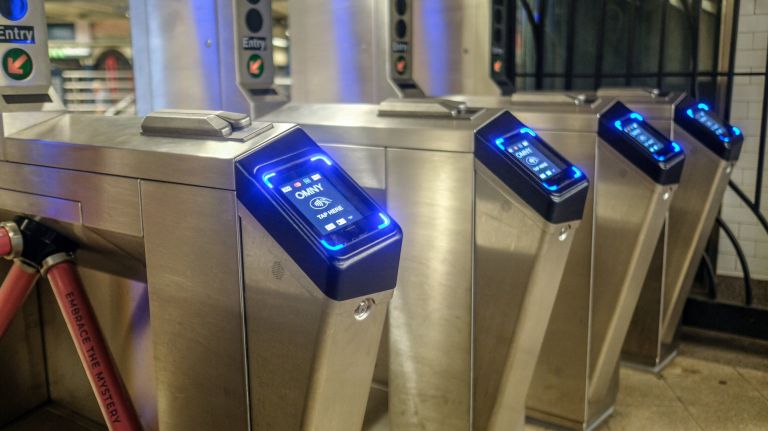
The MTA is pushing some New Yorkers to hit the tap.
Thousands of commuters have tried out the MTA’s new fare payment system, which involves tapping a smartphone, smartwatch or other devices with digital wallets, or a contactless bank card against a screen, during the first weekend of a very limited pilot, the authority said.
On Saturday, the MTA recorded about 6,100 taps through the new system, known as OMNY, which is short for One Metro New York. The subways accounted for about 5,900 taps, with buses seeing 200 on what was the first full day of OMNY operations, following a Friday afternoon launch.
“We’re thrilled that New Yorkers are adopting OMNY even quicker than expected, and that the first several days have gone so well,” said Al Putre, the executive director for the new fare payment program, in a statement. “The more that people use the system the easier it will be for us to learn what’s working and what isn’t, ensuring that New Yorkers will get the system they deserve — one that saves them time and hassle as they go about their day.”
OMNY is currently available at 16 stations along the Lexington Avenue line of the 4, 5 and 6 lines, from Atlantic terminal to Grand Central Station, and on all Staten Island buses. Riders will eventually be able to use OMNY-branded tap cards, but right now the pilot is restricted to single riders via digital wallets and contactless bank cards.
About 80 percent of those Saturday taps came from phones, according to the MTA.
The usage was much higher than what the MTA had anticipated. The authority had estimated 6,000 to 12,000 taps per week through the subways as well as another 800 to 1,500 taps each week on buses.
It is not clear if the current usage can be sustained through the pilot or if riders were swiping for the novelty of the system. The taps accounted for about a tenth of a percent of average Saturday subway ridership, which is about 3 million subway riders.
The narrow scope of the pilot locks out most commuters, but the MTA is taking the project slowly to ensure kinks do not cripple the service. OMNY is not yet practical for everyday commuters on the 4, 5 and 6 lines because those riders are likely to spend less by buying weekly or monthly MetroCards.
Occasional MTA commuters and visitors from out of town found the system particularly useful.
“It’s been a long time coming,” said Anisha Patel, of the Financial District, as she tapped into the 14th Street-Union Square station Sunday afternoon. “It’s super easy. Most people are already holding their phone. It frees up the queue.”
One commuter Sunday said she had issues initially getting Apple Pay for use at the turnstile. But the MTA said overall data were positive: the readers on average responded in 500 milliseconds and less than 5 percent of users had to tap more than once — the modern “please swipe again,” according to the MTA, which expects those figures to improve.
“I tried to use the machine [to get a MetroCard], but the keys stuck and this was just much easier — I already use Apple Pay to pay for a lot of things,” said Eli Smith of Washington, D.C., who was visiting New York for the weekend.
Patel, a Londoner who moved to New York 10 months ago, has used a similar tap system back home for years. She believed New Yorkers would appreciate the new technology once it becomes more widespread.
OMNY scanners will arrive in all subway stations and buses by the end of 2020. MetroCards will not be completely phased out until 2023.
The MTA’s board has still not begun discussing how the new technology could bring more equity and access to New York City’s transit system through policies like fare capping. Already in London, fare capping may prevent riders from debating whether to get a pay-per-ride or time-based MetroCard or worrying about scraping up enough money to afford a monthly card. Through OMNY, the MTA could automatically adjust and charge riders the most affordable purchase package, based on how many rides they take per day, week or month.
“That was a big moment for us in London,” said Patel.
